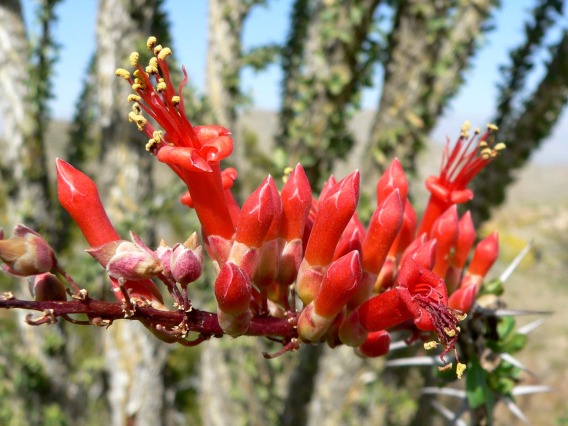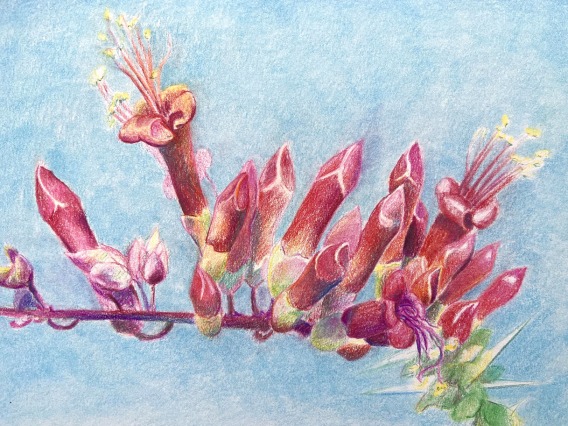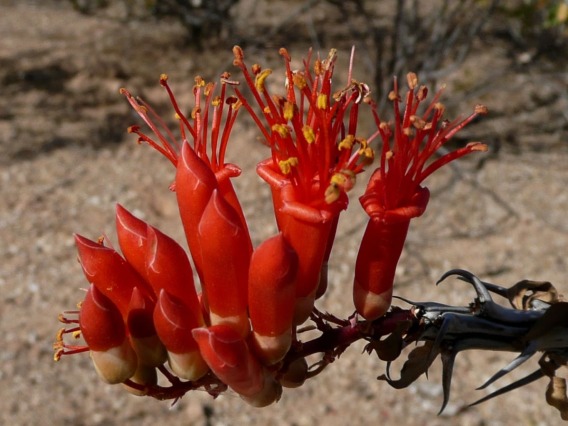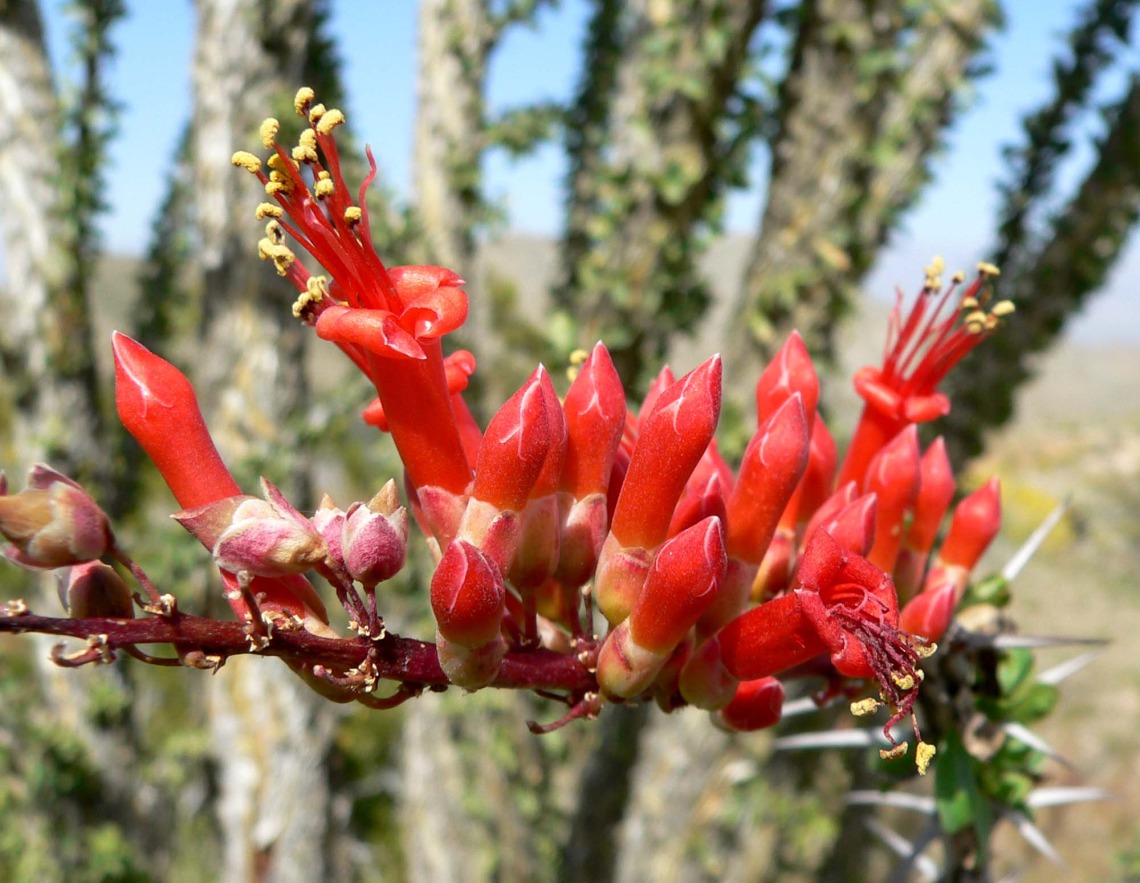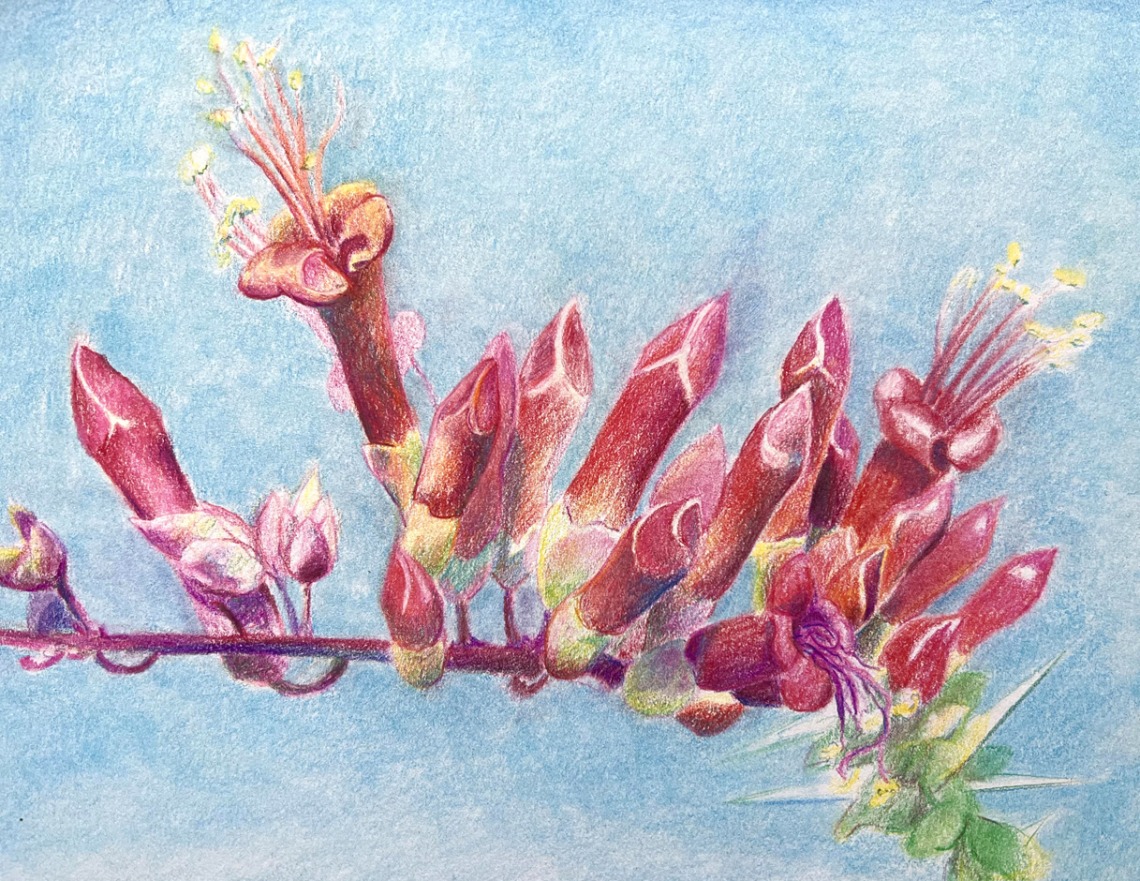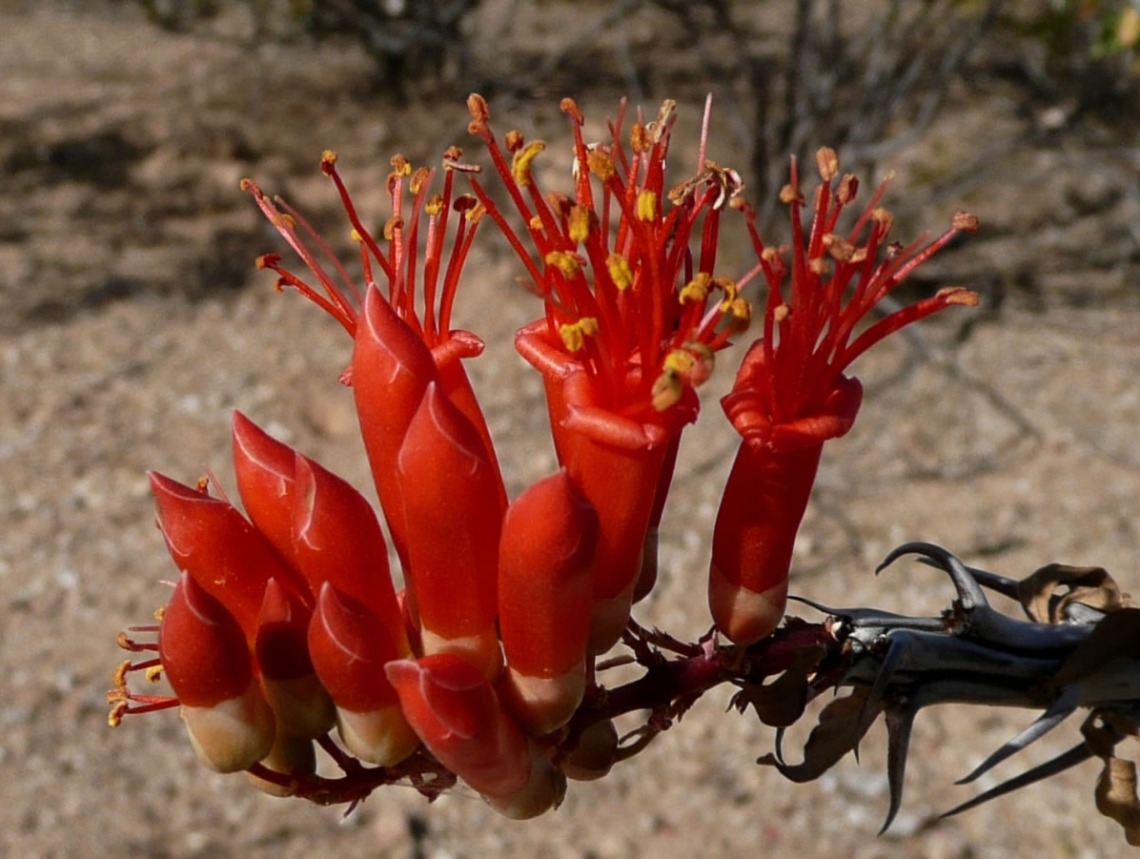Tumamoc Art and Science Workshop
Learn answers to compelling questions such as why did tubular flowers evolve, and how does flower color and shape influence pollination? On Darwin’s birthday as we explored this fascinating relationship with University of California Riverside emeritus ecologists Dr. Mary Price and Dr. Nick Waser, who have spent their impressive careers studying—among many other subjects—pollination relationships between scarlet gilia and its pollinators.
Mary and Nick were joined by Jonathan Marquis, M.F.A., of the University of Arizona School of Art. Nick will lead a session on drawing realistic perspective of tubular flowers and the detail of their reproductive mechanisms.
Length: 2 hours
This is a private page and is only for students who purchased tickets for the series or the February workshop. Please do not share this page or the video link.
To download PDFs from the workshop (instructor bios, scientific papers and copies of the images): Dropbox
To view the Powerpoint by Nick and Mary, please go to this link (all rights reserved, for viewing only and not for distribution):
Please provide feedback when you finish the workshop on this Form!
Here is the recorded workshop which will be available until August 12, 2022:
From question during session: "If you present the bee with a red flower, that is reflecting red spectrum, in an environment of ultraviolet light does the bee still see the flower? Or is the reflected light spectrum removed?"
From Nick:
- If both flower and background reflect the same in the UV light, the bee cannot discriminate one from the other visually, even though it sees light and presumably knows that it is short-wavelength light by comparing stimulation of the UV receptors to stimulation (zero or very little) of the two longer-wavelength receptors in the eye.
- The materials Lars Chittka used for red artificial flowers and green background had equivalent (near zero) reflectance down to about 300nm, the near UV that we are discussing here that bees (and hummingbirds, and some butterflies, etc.) can see.
- Many red flowers have reflectance spectra that are very much like those for the materials Lars used.
- BUT Dannie is on target if the idea is that there are other red flowers that also reflect between 300-400 nanometers as well as reflecting above 610nm. Such flowers do exist! Some red poppies are an example if I recall correctly. These flowers have a secondary, smaller reflectance in the near UV. Such a flower WILL reflect differently from the green background, and that by itself would make it visible to (say) a honey bee.
- It was exactly to find out if that secondary UV peak was essential to explain the observation of bees at red flowers, that led Lars to do that experiment. Answer: The UV signal is not essential although it might make flowers that have it EASIER for the bee to see.
- You can then ask: under what conditions will a flower that is red + UV evolve to lose the UV signal? That is the another way of asking how red flowers such as scarlet gilia (which lack a UV signal) will evolve. (as of 1997, when Lars and I published a paper on all of this, it was unknown whether ocotillo has a UV signal or not).
- Notice that because we humans lack UV sensitivity the red flowers with and without UV will look similar to us.
****************************************
As to the physics of reflection and refraction (transparent object) or absorption (not transparent) of incident light, I think what I said before is basically right, but I should not try to imagine it in both classical and quantum mechanical terms (to the extent that I understand either one!). Some of the incident light is reflected, but less than comes in; the rest is absorbed or refracted. Energy is conserved. And some materials fluoresce at longer wavelengths--but now I am about to try to explore why reflectance and fluorescence are different at a quantum level (if they are).
View sample images, Jonathan's sketch, and students' work in the gallery below (click images to enlarge):
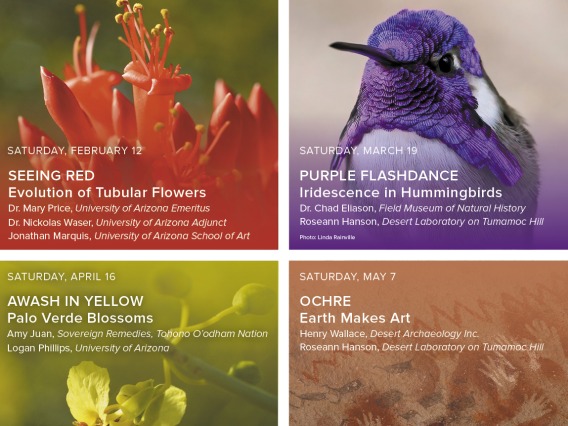
Spring 2022 DE COLORES Art and Science Workshops
Join us for all four or just one or two of the fascinating art and science workshops for Spring 2022


